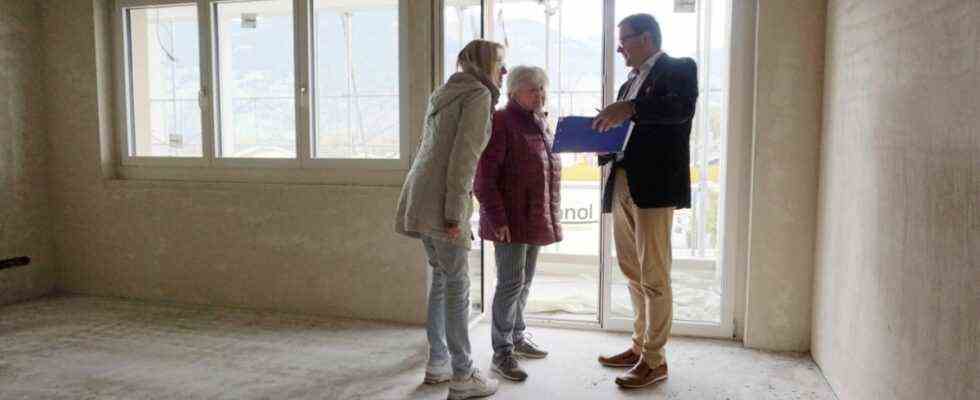A wide entrance door, level access to the house, a floor-level shower – all of this is part of a barrier-free home. Many people would like to live in such an apartment or house so that they can live independently into old age. But the rents in age-appropriate apartments are consistently more expensive than apartments with thresholds, stairs and steps. And barrier-free offers are particularly difficult to find on the housing market.
According to the Federal Statistical Office, more than every fifth person in Germany belongs to the 65+ generation. And there are more every year: According to an analysis by the state development bank KfW, the number of people over 64 is likely to increase from around 18 million to more than 23 million in 2035, and the baby boomers are reaching retirement age. However, older people are particularly at risk at home. Researchers from the University of Tokyo asked more than 1,500 men and women, an average of 68 years old, about their experiences with accidents at home. The result: one or one in three reported falling at home in the past three years. One in ten people even suffered a broken bone. The constant fear of falling can reduce the quality of life.
Doctors and architects are not the only ones advising to take care of your own barrier-free four walls as early as possible. Certainly good advice for people who already live in their own property and can afford a renovation, especially since KfW offers one grant of up to 6,250 euros or a cheap loan of up to 50,000 euros. Tenants, on the other hand, have to make sure that they find a barrier-free apartment or an arrangement with their landlord for a renovation that both sides can live with. A new evaluation of the real estate portal Immowelt now shows: Renting an apartment advertised as age-appropriate costs more money. This was the result of an analysis of the asking rents for senior-friendly properties with a size of 40 to 120 square meters in the 14 largest cities in Germany.
According to a calculation by KfW, two million such apartments will soon be missing
According to this, in twelve cities an average of more than 100 euros monthly rent is to be paid, in five cities even at least 200 euros more. In Berlin, apartments classified as senior citizen-friendly are even offered for an average of 1,100 euros – and thus 250 euros more expensive than properties without this feature. According to the study, tenants in Hamburg, Bremen, Düsseldorf and Frankfurt also have to expect particularly high surcharges. The situation is different in Germany’s most expensive city: In Munich rents are “generally so high that the premium for age-appropriate apartments of 90 euros per month is rather small,” reports Immowelt.
The real estate experts also attribute the sometimes significant surcharges to the fact that apartments suitable for senior citizens are often new buildings or at least not yet that old. In old buildings, “a conversion or retrofitting is often too expensive or not possible”. This contributes to the fact that older people “cannot switch to cheap existing properties when looking for accommodation,” says Immowelt.
In any case, the need for residential properties with access without stairs, an elevator, a shower with a shallow entrance is great. According to KfW analysis As of spring 2020, there are three million households in Germany with residents whose mobility is restricted. By 2035, their number will rise to 3.7 million. Despite the growing number of barrier-free apartments, especially in apartment buildings, the development bank has calculated that the supply gap with such apartments is two million. Other experts consider such forecasts to be too high. They also point out that people of retirement age not only live longer, but also stay fit and healthy longer.

